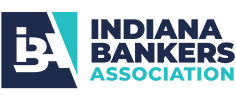As we are all in this unusual time of a pandemic with various levels of lockdowns and social restrictions and the resulting economic downturn, unemployment and business closures, many financial institutions are trying to wade through processes on how to help their customer base through modifications, deferments, waiving of fees and loan proceeds for small businesses. Two areas of the bank that now have been impacted are the loan servicing area and loss mitigation.
The FFIEC Interagency Fair Lending Examination Procedures require that a risk profile be developed based on the organization, staffing, training, recordkeeping, auditing, and policies of the institution. The most noted risk factors considered when evaluating the fair lending risk profile relate to the compliance program, overt indicators of discrimination, redlining, or indicators of disparate treatment in underwriting, pricing, steering, or marketing exist. Two other fair lending risk factors that do not always get intense focus are the areas of loss mitigation and loan servicing.
The bank needs to question: Will the bank have the ability to tell if there are any forms of disparity occurring during this unprecedented time? What data should be captured for reviews or audits? Is there sufficient documentation within each loan file to support the action taken for each borrower from start to finish? Were the actions taken by the institution fair and consistent?
Bank management teams should be reviewing all aspects of changes to loan programs, required disclosures for the changes to loan programs, and repayment to identify possible risks. Management will meet with bank staff in the various areas affected – line lenders, call center associate, loan operations and loan servicing staff, and stand-alone collection departments. A bank should be training on the new processes or ensure the changes have been added to the written procedures for consistent practices across the board. Therefore, fair lending should be part of any decisions made to ensure fairness and consistency in all the areas affected.
Regulatory agencies have been issuing guidance on various aspects programs to assist banks with customer loans and funding of loan proceeds to maintain payroll to businesses. During regulatory exams, examiners will probably include inquiries and possible reviews of the handling of these customer loans, applications and payment collection processes. Besides reviewing for safety and soundness, the bank’s newly implemented processes for meeting the pandemic needs may be reviewed to determine if there are any forms of disparate treatment or disparate impact associated with the practices. Their focus would be on the treatment of both consumers and small businesses alike.
Several questions should be considered when implementing these new processes or loan programs with regard to fair lending:
- What should be reviewed, monitored, tracked, trended, and reported to management?
- Should the bank’s fair lending risk be increased in their Fair Lending Risk Assessment for Loan Servicing and Loss Mitigation?
- What are the processes that should be considered?
A great resource for use in evaluating a bank’s fair lending level of risk in the areas of loan serving and loss mitigation would be the FFIEC Interagency Fair Lending Examination Procedures. The exam procedures have a sample chart of the risk indicators for loan servicing and loss mitigation which is included in the table below:
Indicators of Loan Servicing and Loss Mitigation
| Factor | Description |
| L1 | Substantial disparities among loss mitigation servicing options by prohibited basis group characteristics. |
| L2 | Substantial disparities in decision processing time by prohibited basis group characteristic. |
| L3 | Significant disparities in the completion of foreclosure actions once legal process initiated by prohibited basis group characteristic. |
| L4 | Lack of clear loan file documentation for servicing or loss mitigation decisions, granting of policy exceptions, or reason for fee waiver. |
| L5 | Weak or non-existent process and controls to ensure on-going fair lending compliance, including that of a third-party vendor. |
| L6 | Lack of clear guidance on determining appropriate loss mitigation options, making policy exceptions, or granting fee waivers. |
| L7 | Internal audits, compliance reviews, or monitoring reports identifying significant weaknesses or violations in handling exceptions, fee waivers, incorrect credit reporting agency reporting, or comply with bank policies and procedures. |
| L8 | Consumer complaints alleging discrimination in servicing or loss mitigation practic.es |
| L9 | High volume of policy exceptions or fee waivers by prohibited basis group characteristic. |
| L10 | Significant level of litigation alleging discrimination in loan servicing or loss mitigation practices. |
| L11 | Broad employee discretion in determining loan servicing and loss mitigation actions. |
| L12 | Employee collecting information, conducting inquires, or imposing conditions inconsistent with express Regulation B or Fair Housing Act requirements. |
| L13 | Collection practices not based on delinquency status. |
| L14 | Employee compensation based on workout, loss mitigation, or foreclosure strategy adopted. |
| L15 | Lack of clear consumer disclosure on loss mitigation options available, the costs of each option, and the risk involved. |
| L16 | Lack of clear procedures for determining a borrower’s ability to repay when selecting loss mitigation options. |
| L17 | Vague or subjective criteria for property inspections, broker price offers, appraisals, or other valuations |
The table notes several areas of focus such as required disclosures, decisioning processes, training of staff, exceptions, and complaints. All these areas will require some type of review process to identify potential forms of discrimination.
As banks implement new loan programs or processes, whether these be changes in underwriting processes or changes in terms or payment collection practices, banks should ensure written procedures are updated or developed to ensure staff are knowledgeable of the new guidelines for clarity and consistent practices. In all instances, the customer’s ability to repay and appraisal requirements should be at the forefront. Again, consumer and small business loans would be specific areas of focus for discrimination.
The bank should implement and document additional training of staff for the new loan programs and processes. This information can be provided to the regulatory agencies at their next examination to demonstrate the bank’s efforts to ensure that all loan servicing and loss mitigation staff provide fair and equal treatment to all of its customers.
Within the procedures, there should be written processes for handling of exceptions. There should be specific directions for additional approval since individual staff discretion can lead to inconsistent practice and unforeseen disparity patterns. Exceptions should be collected, monitored, and have upward reporting to management. The area of Exceptions is one of the biggest fair lending risks and regulatory agencies will review, whether for underwriting or pricing, which now should include a focus on loan servicing exceptions or exceptions in the area of loss mitigations.
Another area to implement is data collection, as permissible by law, within the core system; the geocode of the borrower’s address to identify the income level of the location of census tract. The data can be used to perform an analysis to ensure the same level of fair and equal treatment to borrowers in the low- and moderate – income census tracts as in the middle- and upper- income census tracts. The data can show trends of fee waivers, rate reductions or processing time for each of these income level locations. In addition, the geocodes can identify substantially minority population census tracts of which similar trending can identify substantially minority census tracts area not receiving similar treatment as non-substantially minority tract locations.
In addition, a bank can utilize the CFPB’s proxies resources to determine race and gender of the borrowers to perform a similar analysis for census tracts to identify forms of disparity based on race and gender. An analysis of the processing time – from the initial phone call from the borrower requesting assistance to when a final action was taken – and a review of the impact of additional compensation practices on the collection and resolution of delinquent past due accounts, could be performed to identify inconsistent practices in n the loss mitigation area which could lead to potential discrimination.
Lastly, a bank should strengthen its complaint process and perform trending analysis to determine if a particular business unit, service or staff members appear to have a higher volume of complaints during this period. Review complaint logs to determine if a customer has complained of unfair treatment.
The bank will want to ensure its Fair Lending Risk Assessment has been updated accordingly, reviewed by the Compliance Committee, and presented to the bank’s Board of Directors when there is significant change in the level of fair lending risk, or at least annually.
Being prepared and proactive will help a bank stay ahead of the game when it comes to fair lending in the areas of loan servicing and loss mitigation. If your bank needs assistance in any area regarding fair lending, please contact TCA for assistance. We are happy to assist and show A Better Way!






